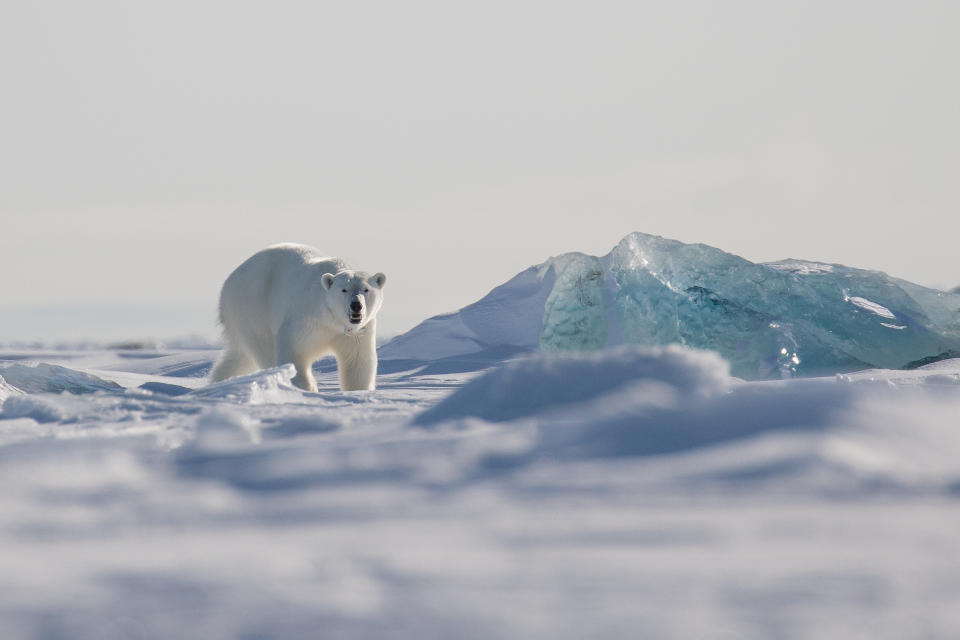Polar bears could mostly disappear from Arctic by the year 2100, study warns

Melting sea ice could see polar bears forced on to land for long periods, with many Arctic bear populations facing extinction by 2100, a new report has warned.
The animals depend on sea ice to hunt prey such as seals.
Researchers from the University of Toronto in Canada warned that melting sea ice, caused by global warming, will see the creatures forced on to land and going hungry.
This would see the future of all but a few bear populations “jeopardised” by 2100, the scientists warned.
Read more: Polar bear ‘invasion’ – climate change causes human-animal conflict
Unless “aggressive” cuts to greenhouse gas emissions are enacted in the near future, most populations of the animals could face extinction, the study in Nature Climate Change warned.
The researchers used computer models to determine a polar bear’s energy requirements and the thresholds that would limit survival, along with a model to predict the future number of ice-free days.

The research showed that bears will be forced ashore for increasingly long periods as ice melts, jeopardising their survival.
There are only about 26,000 bears left – divided into 19 "sub-populations" across the Arctic.
In the southernmost area, many bears are already forced ashore each summer.
Read more: Antarctic records hottest temperature ever
While on land, they rely on body energy reserves for survival and lactation due to the absence of adequate food.
They can last for months on shore, but there are limits, the researchers warned.
Corresponding author Dr Peter Molnar said: "Prolonged ice absence from productive continental shelf waters now also forces increasingly long fasts in the other eco-regions where bears historically continued foraging on perennial ice through summer."
He added: "Similar trends are expected throughout the Arctic as ice loss continues."
Read more: Antarctica now has more than 65,000 meltwater lakes
Past statistics were used to estimate when the survival thresholds would be surpassed for 13 Arctic sub-populations, representing 80% of all polar bears.
Researchers found that cubs would be most at risk from fasting, while solitary adult females would be the least affected.
It also found that survival thresholds may have already been reached in several polar bear sub-populations.
Read more: A 1988 warning about climate change was mostly right
Dr Molnar said: "Our model captures demographic trends observed during 1979 to 2016, showing recruitment and survival impact thresholds may already have been exceeded in some sub-populations.
"It also suggests that, with high greenhouse gas emissions, steeply declining reproduction and survival will jeopardise the persistence of all but a few high-Arctic sub-populations by 2100.
"Moderate emissions mitigation prolongs persistence but is unlikely to prevent some sub-populations disappearing within this century."
Read more: Melting snow in Himalayas drives growth of green sea slime visible from space
The authors said their study was limited by the use of a single “earth systems model” – used to determine how sea ice will be affected – and because of uncertainties and variations in bear behaviour and energy usage among sub-populations.
“Our model captures demographic trends observed during 1979 to 2016, showing that recruitment and survival impact thresholds may already have been exceeded in some (polar bear) sub-populations,” the authors said.
“It also suggests that, with high greenhouse gas emissions, steeply declining reproduction and survival will jeopardise the persistence of all but a few high-Arctic sub-populations by 2100.”

 Yahoo Finance
Yahoo Finance 
